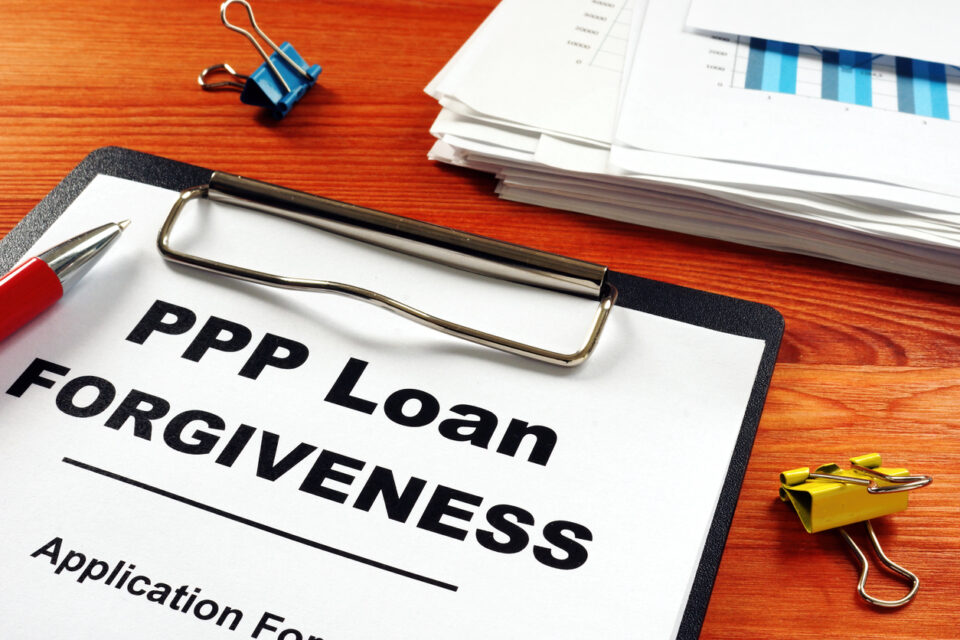New PPP Loan Forgiveness Applications and Guidance
Date
June 17, 2020
Read Time
3 minutes
Share

We woke up to several new forms from the SBA regarding the PPP forgiveness application on Wednesday. We’re breaking down a few high-level updates below as PPP borrowers begin to navigate the forgiveness process, including when to apply and which application they should use.
When to Apply
One of the most frequent questions we’ve been asked lately is whether borrowers have to wait until the end of their covered period to apply for loan forgiveness, especially now that a new 24 week covered period was introduced in the Paycheck Protection Program Flexibility Act (PPPFA).
While today’s updates still haven’t addressed these questions directly, in testimony given at a Senate hearing last week, Treasury Secretary Mnuchin stated that borrowers can apply for forgiveness whenever they have used all of their loan funds (i.e., they do not have to wait until the end of the 24 weeks).
Although we’re still waiting on this information to be included in an Interim Final Rule or addressed in new FAQs, we are reasonably confident that the SBA and Department of Treasury will not turn back on this sworn testimony. Borrowers should reach out to their lenders to discuss the process of applying for forgiveness.
- A link to the full C-SPAN recording with this testimony is here if you’ve reached the end of your Netflix queue and need some new content.
New Shortened “EZ” Application
The SBA issued a new “EZ” forgiveness application that simplifies the application process and requires less documentation and calculations. This EZ application can only be used by borrowers that meet at least one of the requirements listed below:
- Are self-employed and have no employees; or
- Did not reduce the salaries or wages of their employees by more than 25% and did not reduce the number of hours of their employees; or
- Experienced reductions in business activity as a result of health directives related to COVID-19 and did not reduce the salaries or wages of their employees by more than 25%.
Revised Standard Application and Instructions:
The revised standard forgiveness application and instructions were updated to be shorter and reflect updates from the PPPFA, including a 24 week covered period option.
One clarification we have been waiting for is whether the new 24 week period would come with updates to the cap on employee and owners’ payroll costs during the covered period. The following updates are applicable regardless of what application form a borrower uses:
- Previously under the eight week covered period, employees and owners’ payroll costs were eligible for forgiveness up to $100,000 annualized (i.e., $15,385 over eight weeks).
- With the new 24 week covered period, loan forgiveness is limited to a cap of $46,154 per individual over the 24 weeks (calculated as $100,000/52 x 24).
- However, for owners, sole proprietors, and self-employed individuals, the amount of payroll costs eligible for forgiveness is capped at 2.5 months’ worth (2.5/12) of 2019 net profit (up to $20,833) for the 24 weeks (calculated as (2.5/12) x (2019 net profit))
- Our current understanding is that sole proprietors and self-employed individuals could receive full forgiveness of their loan if they use the full 24 week covered period (given that the maximum loan amount was calculated as 2.5 x average monthly payroll costs for 2019).
- We assume that this cap on the amount of payroll costs eligible for forgiveness will be updated depending on how long a borrower’s covered period runs. For example, if a borrower used ten weeks to spend their funds and applied for forgiveness after the end of the ten weeks, their cap on payroll costs per employee during the covered period would be $19,231 (calculated as $100,000/52 x 10).
While the above includes general information regarding the new forgiveness applications, borrowers should seek individual guidance from their lender as well as tax and legal professionals. Please reach out to our team if you have any specific questions regarding your PPP loan and your particular circumstances.